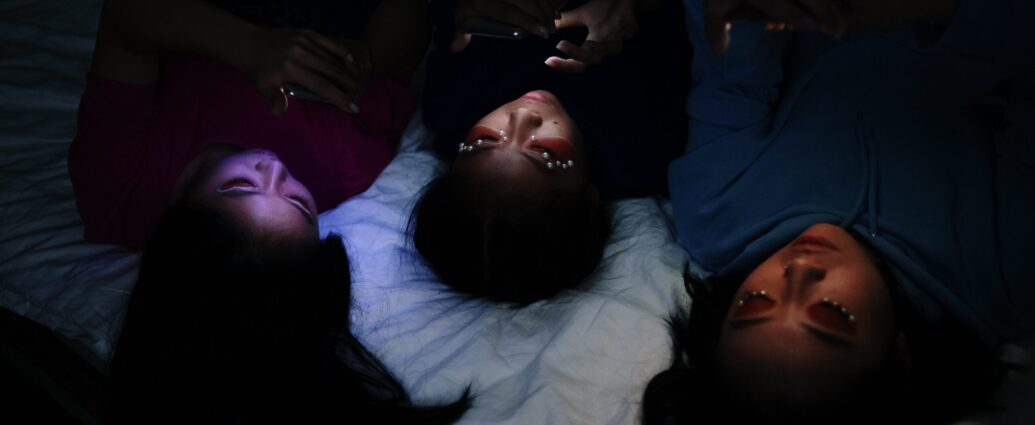Elisabetta Laurence
If you’re strong enough to have resisted TikTok’s beckoning grasp for this long, then you’re healthier and more irrelevant for it. But if instead you’ve succumbed to its seductive allure, you might know what “goblin core” or “pilgrim core” entails.
A few years ago, the first “cores” emerged. We saw pearly white smeg kettles boiling away on terracotta kitchen tiles, and floral frocks swaying on clotheslines beside the stony walls of idyllic country homes. Young TikTok creators repurposed “cottagecore” from Tumblr and embraced it as a version of the blissful utopia they will always crave, and never achieve.
Those of us on the Gen-Z-Millenial cusp consume these videos like an afternoon snack and don’t dare ask where the modifier came from. Millennials in the corner insist that this aesthetic is just a successor of their wide-brimmed hats and Chelsea boots. Others in the room tut and shake their heads.
The ‘Core’ Movement
“Give me distortion, give me over-saturation, give me pixellated anime!”
A trend catches on. If simple rural living can be an aesthetic, can’t the sparkly summer rays and white sand of H2O: Just Add Water? “Tropicalcore” gasps its first breath. How about the late-night haze and exhilarating anonymity of being awake at 3am in the big city? ‘Dazecore’ flutters open its eyes. Give me distortion, give me over-saturation, give me pixellated anime! “Glitchcore” flashes a sly grin.
The suffix has gained an app-wide acceptance as a term in its own right; as a movement, it is somewhat peaking. It has become a springboard for the creation and interpretation of various ecosystems of “mood”, as new niches gather momentum every day. Every possible subculture is carved into a micro-genre, and thousands of videos are algorithmically lined up to perform on your For You page.
@liliana.eveee This is real living 🤭 #ethelcain #kimkardashianedit #kimkardashian #pilgrimcore #keepingupwiththekardashians #fyp #trending
And then, something shifts. From one day to the next, the trend suddenly topples over the other side of its apex. It has become overused. It’s not new and exciting anymore – it’s become *gulp* mainstream. The ultimate expletive. Users arrive at this realisation and place it in the “uncool” basket. But this doesn’t mean it doesn’t have its place. We can now collectively proceed to make fun of this trend – or use it as a tool for parodying other things. And isn’t that fun!
The ironic, self-aware flair of Gen Z flourishes as the tag is saturated again, with a huge assortment of content. The suffix is now used to represent incredibly niche ideas – “frog core” raises its slimy beanie-donned head. All the while, “America core” weaponises stars, stripes and Reese’s Pieces to satirise American stereotypes.
The Lifecycle of ‘Core-core’
Now that users have rigorously used, washed, wrung out and used the suffix again, the trend stops being a trend. The suffix has been firmly integrated into the vernacular of online language and the flux of viral content production has slowed. The “-core” idea is that someone can observe TikTok from a detached, pansophical perspective. Introducing: “core-core”.
“They resemble an antithetical rebellion against categorisation”
‘Core-core’ is the anti-trend to the “core” movement – perhaps an art form in its own right. The tag eschews the genrification of content and pulls away from representing specific aesthetics. It is characterised by hyper-stylised, highly-curated, dada-esque video edits that mash together seemingly disparate clips. “Core-core” videos lean into chaos, juxtaposition, and general overwhelm through hypnotic audiovisual mosaics, that explore kind of everything and kind of nothing. Or, as Kieran Reynolds-Press puts it, “the absurd realness of vibelessness”.
The insanity of these videos seems to be part of the point. They resemble an antithetical rebellion against categorisation and ultimate commodification of “core” content. Ironically, for a movement that was born out of a defiance of structure, these videos tend to be relatively identifiable by some key markers: quick-fire montages that often include old-school meme text, a clip of Ryan Gosling screaming, perhaps a cat meowing in reverse, and usually the sonic accompaniment of internet rap or a nostalgic monologue about loneliness.
@fax_cap_offiicial
Core-Culture and Gen-Z
Emerging from the meaninglessness: meaning. “Corecore” videos demonstrate an attempt to encapsulate what it means to exist as an anonymous Gen Z. Trying to understand a world that is both incredibly oversaturated online, and incredibly overwhelming in real life.
“This cycle is propped up and exploited by apps that consume our screen time”
They are an expression of the desire to connect with others who understand life growing up on the internet, navigation of a rich pop-culture metaverse, the submergence into technological stimuli.
Collective generational trauma aside, the journey of “core” culture from its earnest beginnings to its bitter end undoubtedly tells us something interesting about humans. How we organically seek to organise and reflect upon ourselves, and ultimately rebel against self-systemisation.
It just so happens that this cycle is propped up and exploited by apps that consume our screen time, and constitute our youth culture on an increasing basis.
READ NEXT:
-
THE ‘TIKTOKIFICATION’ OF THE NEXT GENERATION
-
‘PICK ME GIRLS’: THE MISOGYNY BEHIND THIS NOTORIOUS TIKTOK TREND
-
WHAT’S MY INTERNET AESTHETIC? MORE IMPORTANTLY, WHO CARES?
Featured image courtesy of cottonbro studio via Pexels. No changes were made to this image. Image license found here.

